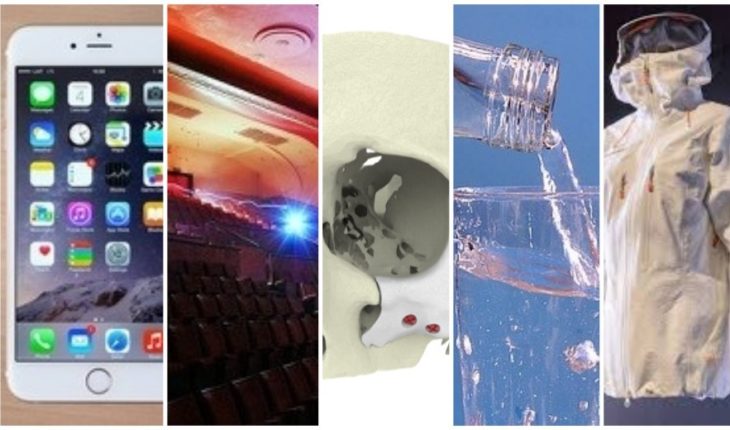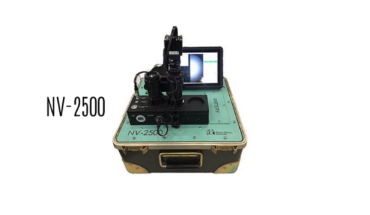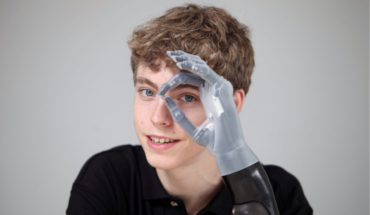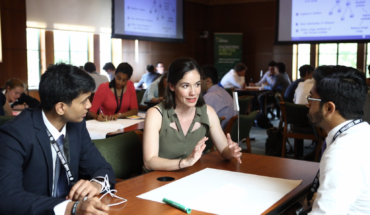This is Engineering campaign works with young engineers to compile a list of engineering wonders as research shows misconceptions about the profession could be preventing young people finding their dream career.
Young people asked to identify engineering wonders of the 21st century in a bid to highlight the breadth of the world of engineering.
Cutting edge innovations such as YouTube, Gore-Tex, the iPhone and Dolby Atmos cinema sound are among products identified as engineering wonders.
Over 95% of 11-18-year-olds surveyed are unaware that engineering jobs exist in the arts, healthcare, fashion, beauty and hospitality.
More than half of teens use Facebook and YouTube, yet fewer than 16% were aware that these have been created by engineers
Over half of teens correctly listed famous construction projects such as the Eiffel Tower, London Underground and The Shard as examples of engineering, less than 20% were aware that social media apps such as SnapChat and Spotify have been developed by engineers.
The This is Engineering campaign, led by the Royal Academy of Engineering, has worked with young engineers to identify seven wonders of the 21st century world that are rarely recognised as feats of engineering. The list includes breakthroughs in fashion, sport, technology, entertainment, film, healthcare and the environment, and highlights the increasingly broad role of engineering in everyday life.
The list was drawn up with input from a range of experts and a panel drawn from the Academy’s programmes for young engineers. It is part of the This is Engineering campaign, which aims to raise awareness of the breadth of careers in engineering and to help address the significant engineering skills and diversity shortfall that is holding back growth and productivity across the UK economy.
The list of engineering wonders is as follows:
Gore-Tex Fabric
Gore-Tex Fabric is a waterproof, breathable membrane that repels liquid water while allowing perspiration to pass through, and is bonded as a waterproof layer to outdoor clothing and footwear – the latest version consists of a single waterproof membrane, reducing weight by eliminating the need for a face fabric. Gore-Tex is robust and durable and has greatly reduced the use of waterproofing sprays and waxes that must be reapplied as they wear off.
Hawk-Eye
Hawk-Eye is a computer system that visually tracks the trajectory of a ball and displays a profile of its statistically most likely path of movement. The system generates a graphic image of the ball path and playing area, which means that information can be provided to judges and television viewers in near real time. The system has been implemented across numerous sports including tennis, cricket, football and badminton, assisting referees with a trusted and accurate referral system used to settle tight calls.
Dolby Atmos
Dolby Atmos creates powerful, moving audio by introducing two important concepts to cinema sound: audio objects and overhead speakers. Together, these completely change how soundtracks are created and heard. Traditional stereo surround soundtracks – as pioneered by Dolby for Star Wars in 1977 – confine all sounds to a small set of channels that can deliver sound from only a few perceived angles. Dolby Atmos frees sound from these channels and enables artists to treat specific sounds as individual audio objects. These can be precisely placed and moved by the soundtrack creator anywhere in the cinema’s three-dimensional space, making the cinematic experience far more immersive.
iPhone
Apple’s iPhone launched a mobile communications revolution in 2007, introducing the world to apps and putting the internet in everyone’s pockets. Building on the enabling technology of the ARM chip that powers 95% of smartphones, the launch of the iPhone revolutionised the user interface on ‘smart’ devices, and their consistency and simplicity brought a whole new audience to smart devices. Smartphone development provided a catalyst for the miniaturisation of processors and advances in screen technology, gyroscopes and GPS connection that have changed the way we live.
YouTube
Launched in 2005, YouTube has played a central role in democratising video distribution. YouTube took internet protocol video (streaming video from one device to another) from a relatively minor service to something used by all, and paved the way, once broadband was widely adopted, for services such as Netflix and Amazon Prime. Since being acquired by Google, the platform has integrated 360-degree video, virtual reality and live streaming. Today, anyone can launch their own YouTube channel—and potentially become a megastar, without the help of Hollywood studios, networks, or agents.
3D printed bone implants
One of the most recent developments on the list, 3D printing technology is being used to create custom structures and scaffolds, made of ceramics similar to natural bone, that new bone can grow around. The latest implants are bioactive, encouraging bone regrowth and enabling the bone to integrate with the implant. These techniques are already in use for surgery on areas like the jaw and face, and it is also possible to inject bioactive ceramics into larger, load-bearing bones to help them heal.
Clean water
Clean water makes the difference between life and death. Diarrhoea caused by dirty water and poor sanitation kills a child under five every two minutes, but one in six people around the world still do not have access to clean water. While engineering has been used to provide clean water in developed countries for centuries, engineering innovation continues in water sanitation, distribution and treatment, from reducing environmental impact by recycling energy from sludge treatment to developing smart filters made of graphene.
The list was also informed by a survey of 2,000 11-18 year olds’ attitudes to and awareness of engineering careers and industries. Just 14% of teenagers were aware of engineering roles in the music industry, such as audio, recording and live sound engineering, and only 8% were aware that the sports and food and drink industries rely heavily on engineers.
Despite owning or using many engineered products or services, most teenagers were unaware that engineering was involved in designing and creating them. More than two thirds of teenagers own a pair of trainers or sports shoes, but only 20% were aware that they are designed by engineers. More than half of teens use Facebook and YouTube, yet less than 16% were aware that these have been created by engineers.
The research showed that young people tend to have a stereotypical view of engineering. More than half of those surveyed correctly listed famous construction projects such as the Eiffel Tower, London Underground and the Shard as examples of engineering, but less than 20% were aware that social media apps such as SnapChat and Spotify have been developed by engineers.
Professor Mark Miodownik MBE FREng, Fellow of the Royal Academy of Engineering and engineering broadcaster and writer, says:
‘Engineering plays an essential part in everyday life, from the water we drink to the gadgets we use, and it’s also vital to addressing the challenges of the future. However, our survey shows that many young people don’t associate engineering with the technology they use day to day, and the things they’re interested in, which could mean they miss out on the opportunities to change the world as an engineer. We hope our list of surprising, 21st Century engineering wonders will inspire today’s teenagers and give them new opportunities.’






